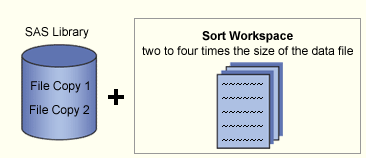IntroductionSometimes you need to group observations by the values of a particular variable or order the observations in a particular way, such as alphabetically, in order to
|

| In some cases, you might be able to use techniques other than the SORT procedure to group or order observations. In other cases, you might be able to use options or techniques with the SORT procedure that enable you to minimize resource usage. |
| This lesson does not cover the Scalable Performance Data Engine (SPD Engine), which is a SAS 9.1 technology for threaded processing. For details about using the SPD Engine to improve performance, see the SAS documentation. |
|
|
1.5 hours |
|
In this lesson, you learn to
|
|
complete the following lessons:
|